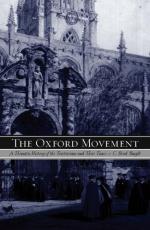The movement was not one of mere opinion. It took two distinct though connected lines. It was, on the one hand, theological; on the other, resolutely practical. Theologically, it dealt with great questions of religious principle—What is the Church? Is it a reality or a mode of speech? On what grounds does it rest? How may it be known? Is it among us? How is it to be discriminated from its rivals or counterfeits? What is its essential constitution? What does it teach? What are its shortcomings? Does it nerd reform? But, on the other hand, the movement was marked by its deep earnestness on the practical side of genuine Christian life. Very early in the movement (1833) a series of sketches of primitive Christian life appeared in the British Magazine—afterwards collected under the title of the Church of the Fathers (1840)—to remind people who were becoming interested in ancient and patristic theology that, besides the doctrines to be found in the vast folios of the Fathers, there were to be sought in them and laid to heart the temptations and trials, the aspirations and moral possibilities of actual life, “the tone and modes of thought, the habits and manners of the early times of the Church.” The note struck in the first of Mr. Newman’s published sermons—“Holiness necessary for future blessedness”—was never allowed to be out of mind. The movement was, above all, a moral one; it was nothing, allowed to be nothing, if it was not this.[65] Seriousness, reverence, the fear of insincere words and unsound professions, were essential in the character, which alone it would tolerate in those who made common cause with it.
Its ethical tendency was shown in two things, which were characteristic of it. One was the increased care for the Gospels, and study of them, compared with other parts of the Bible. Evangelical theology had dwelt upon the work of Christ, and laid comparatively little stress on His example, or the picture left us of His Personality and Life. It regarded the Epistles of St. Paul as the last word of the Gospel message. People who can recall the popular teaching, which was spoken of then as “sound” and “faithful,” and “preaching Christ,” can remember how the Epistles were ransacked for texts to prove the “sufficiency of Scripture” or the “right of private judgment,” or the distinction between justification and sanctification, while the Gospel narrative was imperfectly studied and was felt to be much less interesting. The movement made a great change. The great Name stood no longer for an abstract symbol of doctrine, but for a living Master, who could teach as well as save. And not forgetting whither He had gone and what He was, the readers of Scripture now sought Him eagerly in those sacred records, where we can almost see and hear His going in and out among men. It was a change in the look and use of Scripture, which some can still look back to as an epoch in their religious history. The other feature was the increased




